Welding is a long-standing process that remains essential in various industries. Manufacturers employ different types of welds depending on the project's requirements. Tack welding is particularly important in manufacturing. This guide gives detailed information about everything you need to know about what is tack weld, how to tack weld, forms of tack weld, and practical ways to ensure high-quality tack welds.
Tack weld definition means that it is a temporary welding process that involves using low heat and a short arc to temporarily join metal pieces together before the final welding. It is used to hold the components in place and ensure they do not move during the welding process. Without tack welding, it would be difficult to weld accurately and according to specifications.
The purpose of tack welding is to maintain the location, distance, and alignment of the components until the final welding is done. Tack welds act as fixtures when setting up workpieces and they need to be strong enough to resist stresses. This type of welding is commonly used in the manufacturing of various products such as shoes, metal boots, and pipes.
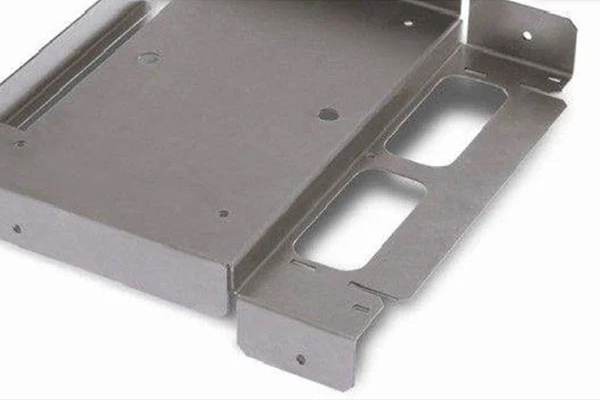
Tack welders are the type of welding equipment or machine that is used to perform tack welds. Tack welding definition means a temporary weld that holds the pieces of metal in place before a more permanent and complete weld is done. It is usually used to align and assemble metal parts or to hold them in place while final adjustments are made before the actual welding process. Tack welding often adopts a welding torch or a welder machine with low-power settings to create small, partially fused welds.
In the process of tack welding, electrodes are used to join the metals by sending electrical current through locally heated workpieces. Heat and pressure are also applied, similar to other welding processes. The key to a successful tack weldment is placing small tack welds throughout the metal pieces. These small welds, usually between ½ to ¾ inches long, but less than 1 inch, help prevent warping and overheating of the workpieces before the permanent welding is done. They are also useful in low-volume production jobs and serve as fixtures in such cases.
Tack welding, despite being a temporary fixture, is critical to the success of welding in general. Its primary duties during the welding process are as follows:
Ensuring proper alignment of materials.
Establishing the location of components involved in the welding.
Setting and maintaining the joint gap.
Reinforcing the strength of a weld while reducing distortions.
Complementing or replacing the function of fixtures where necessary.
Ensuring the mechanical strength of the assembly, albeit temporarily.
Tack welding is a versatile process that can be employed on various materials, including steel, aluminum, cast iron, copper, and brass. The suitability of a material for tack welding depends on factors like the welding process, material thickness, shape, and final weld requirements. Some common materials for tack welding include:
1. Thin Gauge Metals
Tack welding is particularly useful for joining thin gauge metals like sheet metal and thin wall tubing.
2. Structural Steel
Tack welding is commonly used in constructing steel structures such as buildings and bridges.
3. Aluminum
Tack welding can be used on aluminum but may be more challenging due to its high thermal conductivity and susceptibility to distortion.
4. Stainless Steel
Tack welding is frequently employed in fabricating stainless steel components like tanks, pipes, and vessels.
5. Cast Iron
Tack welding can be utilized for repairing cracks or defects in cast iron components. However, caution is necessary to prevent overheating or warping the material.
Different types of tack welding can be used depending on the materials and specific requirements of the job. Here are some of the common types:
1. Spot Tack Welding
This involves making small welds at regular intervals along the joint, which is useful for thin materials or when many tack welds are needed.
2. Continuous Tack Welding
In this method, a continuous tack weld is created along the joint, which provides a stronger hold and is suitable for thicker materials.
3. Stitch Tack Welding
Similar to spot tack welding, intermittent tack welds are made along the joint with larger gaps between welds. This method is useful for thicker materials or when a larger gap needs to be accommodated.
4. Skip Tack Welding
Tack welds are made at irregular intervals along the joint, which helps reduce distortion when working with materials prone to warping.
5. Back Tack Welding
A tack weld is made on the opposite side of the joint from the main weld to prevent warping or distortion during the welding process.
6. Standard Tack Weld
This is a typical tack welding method that involves creating welds large enough to support the weight of the welded materials.
7. Bridge Tack Weld
This type of tack welding is used to fill gaps resulting from mistakes. Small tacks are applied alternately on each component and work well with Flux-Cored welding, Mig, and Tig welding.
8. Ultrasonic Tack Weld
Ultrasonic tack welding uses an electric or gas welding machine to create short pushes or pulls at ultrasonic speed. This fuses the parts by generating enough heat to melt the material and pushing the welding wire into the base metal.
Tack welds are used to temporarily hold parts together before the full welding process. They are also useful for attaching parts. What is tacking in welding? Now we provide answers to this question and there are four primary forms of tack welds:
1. Square
This form involves creating tack welds in a square pattern, resulting in a strong connection. It is particularly suited for joining two parts that are at a right angle to each other.
2. Vertical
In this type, a tack weld is placed vertically between two metal pieces, spanning from the top to the bottom. This method is useful when aligning two pieces vertically.
3. Right Angle
When welding two pieces of metal with a perpendicular relationship, the right-angle tack is the most suitable choice. Tacking the bottom piece works well when aiming to join two pieces at a right angle.
4. Right Angle Corner
If joining two perpendicular pieces would create a T-shape, the right-angle corner tack is the preferred option. Here, the welder joins the pieces at their 90-degree point.
Ensuring quality tack welds is crucial for manufacturers to accurately assess the appearance of the final product and avoid potential risks. This is especially important when dealing with boiler and pressure vessel welding. Here are some essential tips for achieving high-quality tack welds:
1. Test the Metal Piece
Conduct a test on a scrap metal piece to determine the order in which parts should be laid and the amount of filler wire required. This is to avoid unnecessary waste.
2. Clean the Metal and Filler Wire
Prior to welding, make sure both metal pieces are clean and free from contaminants like rust, debris, and oil. Contaminants can negatively impact the welding process and hinder the proper joining of the parts.
3. Use Tape to Secure Parts
To prevent unintended movement during welding, use tape to hold down the parts. This helps maintain alignment and prevents potential issues caused by the metal parts returning to their original forms as they cool down.
4. Familiarize the Area
Since tack welds are temporary and not meant to bear the full load of the piece, identify areas where 2 or 3 tacks can effectively hold the parts together. This knowledge will help optimize the tack welding process.
5. Control Distortion by Planning the Sequence and Direction of Welds
When welding a long seam, start in the middle and use a skip sequence or back step, alternating between directions along the joint length. This helps prevent deformation and stress buildup.
6. Tack in A Sequence Rather than Progressively from One End to the Other.
Tacking progressively could lead to shrinkage, causing overlap or a close in the gap at the other end.
7. Make Sure Strong Filler Wire
Ensure the use of the appropriate filler wire based on the welding type. For example, when using a Mig welder, proper shielding gas is essential during welding.
8. Maintain Balanced Heat
Maintain balanced heat by providing equal heat on both sides of the weld. This ensures the metal receives adequate heat and helps prevent warping and melting. Using a one-second timeframe for heat application is recommended.
9. Allow the Metal to Cool Before Moving It.
Moving the metal before it has fully cooled down can lead to breakage. It is best to let the weld cool completely before attempting any movement.
Following these tips can achieve high-quality tack welds and minimize distortion in your welding projects.
Tack welding and spot welding are two different methods used to join metal pieces together. Here are the key differences between the two:
1. Welding Process
Tack welding uses a small amount of weld metal to temporarily secure two metal pieces in place. In contrast, spot welding utilizes electrical resistance to create a weld between two metal pieces without the need for filler material. Tack welding is temporary, while spot welding is permanent.
2. Weld Size
Tack welds are generally smaller since they aim to temporarily hold the metal pieces. Spot welds, on the other hand, are usually larger and stronger, as they are intended to create a lasting weld between the metal pieces.
3. Application
Tack welding is commonly used in preliminary welding operations to hold metal pieces together before they are fully welded. This technique is often employed in preparation for the final welding process. Spot welding, on the other hand, is frequently used in mass production operations, particularly in industries like automotive manufacturing, to join large volumes of sheet metal.
4. Weld Strength
Spot welding produces a stronger weld than tack welding. This is because spot welding creates a more uniform and consistent weld over a larger area.
5. Weld Appearance
Tack welds are usually less visible because they are typically ground down or covered by the final weld. In contrast, spot welds may be more visible as they are often left exposed on the surface of the material.
Tack welding has a number of advantages and downsides that, depending on your needs, may delete it from your toolkit.
Enhances Accuracy
One benefit of tack welding is that it enhances accuracy by ensuring precise alignment and positioning of materials, resulting in an accurate final weld that meets specifications.
Minimize Distortion
Tack welding can minimize distortion in the materials being welded by securely holding them in place during the welding process, thereby improving the quality of the weld.
Efficiency
Tack welding is also advantageous in terms of time efficiency, as it can be performed quickly and efficiently, ultimately increasing productivity.
Cost-effective
Tack welding is a cost-effective method of joining materials as it requires less material and time compared to full welding.
Improve Safety
Tack welding contributes to improving safety by securely holding materials during welding, reducing the risk of accidents or injuries.
Weaker Joints
One drawback of tack welding is that it can result in weaker joints compared to full welding, making it unsuitable for certain applications.
Increased Defects
Additionally, tack welding carries a higher risk of creating defects in the weld, such as porosity, undercutting, or burn-through.
Potential for Distortion
Tack welding can also lead to distortion in thin-gauge materials, which can affect the overall quality of the weld.
Additional Steps Required
Tack welding requires additional steps in the welding process, which can prolong the time and increase the costs of a project.
Challenging to Repair
If tack welds are not properly executed, they can be challenging to repair or remove without causing damage to the materials being welded.

When performed correctly, tack welding offers significant advantages. To ensure proper execution, it is crucial to engage a reliable and trusted company like Richconn. Richconn offers sheet metal fabrication services and manufacturing services, including top-notch welding facilities and an inspection process to produce flawless metal parts that exceed expectations. We also provide fast lead times, competitive pricing, and cost-effective shipping methods. We have a skilled team of precision machining experts and they can offer you the best engineer support.
To get started, simply send us your design files to Richconn for a rapid quotation. We will also offer in-depth and free feedback in time.
Tack welding temporarily holds metal pieces together, ensuring proper orientation and joint gap. The strength of tack welding depends on factors such as the type of filler material used and the number of tacks. If you need tack welding services for your metal parts, it is recommended to contact Richconn for their expertise and excellent services.
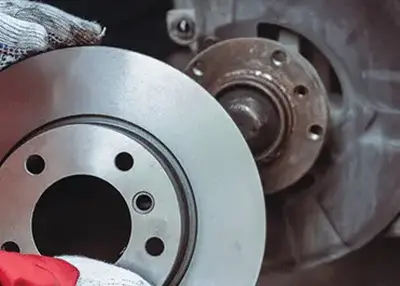 What Are Machined Rotors?November 8, 2023Welcome to the world of precision engineering, where the subtle details can make a world of difference. In the realm of CNC machining and automotive components, 'Machined Rotors' emerge as a pivotal player, quietly ensuring your safety and vehicle performance.view
What Are Machined Rotors?November 8, 2023Welcome to the world of precision engineering, where the subtle details can make a world of difference. In the realm of CNC machining and automotive components, 'Machined Rotors' emerge as a pivotal player, quietly ensuring your safety and vehicle performance.view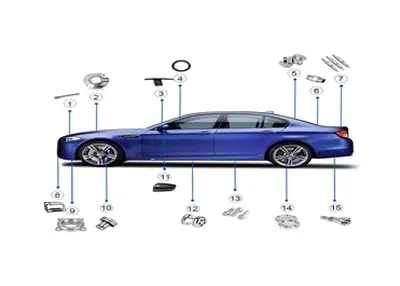 How CNC Automotive Parts Elevate Vehicle FunctionalityJanuary 5, 2024When it comes to the automotive industry, precision and performance are of utmost importance. Manufacturers are constantly striving to enhance the functionality of vehicles, which relies heavily on th...view
How CNC Automotive Parts Elevate Vehicle FunctionalityJanuary 5, 2024When it comes to the automotive industry, precision and performance are of utmost importance. Manufacturers are constantly striving to enhance the functionality of vehicles, which relies heavily on th...view Machining Inspection ProcessOctober 19, 2023A good precision machine shop must have a first-class inspection process and inspection equipment. Here is a brief introduction to Richconn's inspection standards.view
Machining Inspection ProcessOctober 19, 2023A good precision machine shop must have a first-class inspection process and inspection equipment. Here is a brief introduction to Richconn's inspection standards.view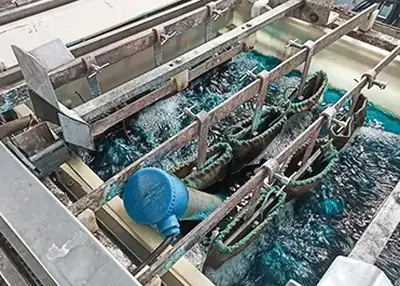 What is Mechanical Testing & How to Test Mechanical Properties of MaterialsDecember 4, 2023Mechanical testing is a series of tests used to determine the mechanical properties of a material as it performs in a particular environment. Mechanical properties are the characteristics that describe how a material behaves and responds when subjected to different types of forces and deformations, such as stress, strain, load, temperature, speed, time, etc.view
What is Mechanical Testing & How to Test Mechanical Properties of MaterialsDecember 4, 2023Mechanical testing is a series of tests used to determine the mechanical properties of a material as it performs in a particular environment. Mechanical properties are the characteristics that describe how a material behaves and responds when subjected to different types of forces and deformations, such as stress, strain, load, temperature, speed, time, etc.view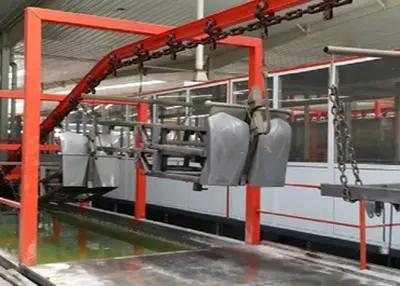 Understanding the Magic of Electrophoresis PlatingJanuary 5, 2024Electrophoresis plating is a fascinating technique that plays a crucial role in several industries. It is a process that involves the deposition of a metallic coating onto a conductive surface through...view
Understanding the Magic of Electrophoresis PlatingJanuary 5, 2024Electrophoresis plating is a fascinating technique that plays a crucial role in several industries. It is a process that involves the deposition of a metallic coating onto a conductive surface through...view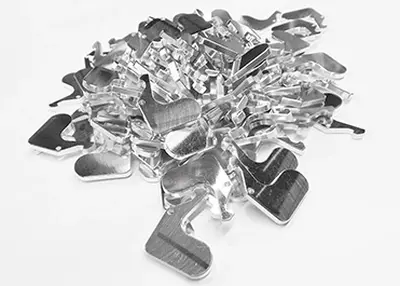 What Are the Characteristics of the Surface Treatment Process for Titanium Alloy Materials?October 30, 2023Titanium alloys are a variety of alloy metals made of titanium and other metals, which are relatively scarce and expensive; titanium alloys are characterized by high strength, light weight, corrosion resistance and high temperature resistance, and can be used in a variety of fine chemicals, which are mainly used in the automotive industry, aerospace, nuclear industry, chemical and petrochemical industries, dentistry and medical restoration and other fields.view
What Are the Characteristics of the Surface Treatment Process for Titanium Alloy Materials?October 30, 2023Titanium alloys are a variety of alloy metals made of titanium and other metals, which are relatively scarce and expensive; titanium alloys are characterized by high strength, light weight, corrosion resistance and high temperature resistance, and can be used in a variety of fine chemicals, which are mainly used in the automotive industry, aerospace, nuclear industry, chemical and petrochemical industries, dentistry and medical restoration and other fields.view